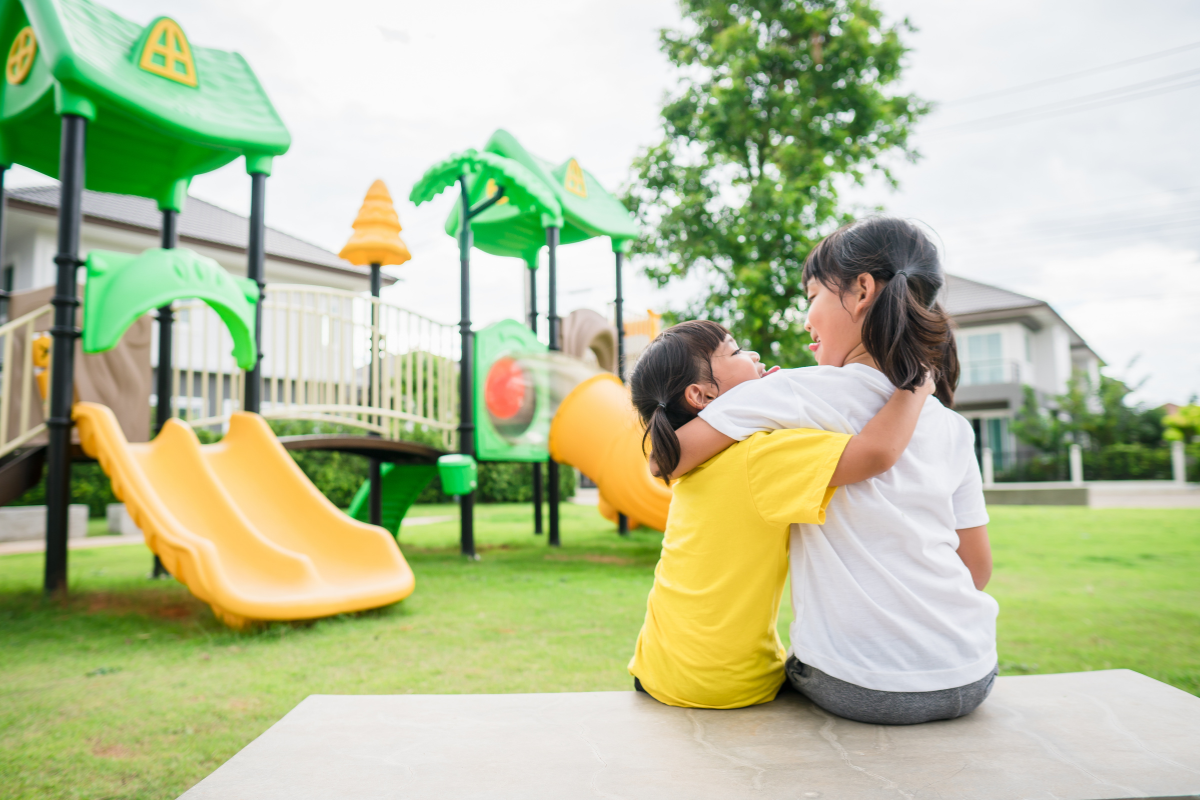Climbing the Charts – Top Playground Equipment Picks for Every Age Group


Have you ever thought about what kind of playground equipment is best for different ages? If so, you’re in the right place. In this blog post, we’ll talk about the best playground equipment for kids of various age groups. We will also cover the essential features that you must look for while selecting the school playground equipment and the accreditations needed.
Table of Contents
Toddlers love to climb! Provide low steps and platforms that allow them to explore different heights. These structures encourage balance, coordination, and confidence.
Benefits: Boosts physical development and spatial awareness.
Create cosy crawl spaces or tunnels. Toddlers adore peeking through, crawling, and pretending they’re on secret adventures.
Benefits: Enhances motor skills, imagination, and social play.
Toddlers will love sandboxes and water tables. They can scoop, pour, build, and splash, thereby refining their creativity. Add buckets, shovels, and watering cans for endless fun.
Benefits: Sensory exploration, fine motor development, and creativity.
An ideal school playground must-have spring rockers (like animal-shaped seats) and ride-on toys where the toddlers can bounce, sway, and giggle. Choose sturdy, age-appropriate options.
Benefits: Develop balance, core strength, and social interaction.
Sandpits with shade structures protect little ones from the sun. Add buckets, spades, and moulds for sandcastle building.
Benefits: Sun safety, imaginative play, and tactile experiences.
You must take care to select toddler-friendly slides, as they must be low (around 4 feet) with gentle slopes. Ensure smooth surfaces and sturdy handrails.
Benefits: Builds confidence, coordination, and joy.
There must be benches, picnic tables, or shaded areas in the playground. These spaces give students a place to socialize, relax, or do homework. These spaces give students a place to socialize, relax, or do homework.
Moreover, you must also consider setting up outdoor classrooms with seating and chalkboards to enhance the learning experience in a fresh environment.
Make sure that all school playground equipment is accessible to every student, including those with disabilities. You must include different play zones for climbing, sliding, swinging, and imaginative play. Consider adding sensory-rich elements like textured surfaces and musical panels to cater to all sensory needs of the students.
Add basketball courts, whether half or full, in the school playground for friendly games. It’s great to have multi-use game areas for volleyball, soccer, or tennis to encourage team sports. Adding chess or board game tables can promote thinking ability and also entertain.
Keep the playground safe by using soft surfaces under climbing structures to cushion falls. Choose equipment that’s suitable for young children to reduce injury risks. You also need to ensure that the playground has secure enclosures to keep kids safe inside the play area.
There must always be a focus on encouraging creativity by adding various interactive play items in the playground such as low balance beams which help kids develop motor skills, while activity panels with buttons, gears, and mirrors can keep their minds engaged.
Children are at an impressionable age where their sensory abilities need to grow, and schools can also aid in developing them. This can be done by adding natural elements like sand, water, and grass. There must be a focus on including trees, rocks, and logs to help children connect with nature and explore different textures and materials.
There must be inclusivity. And to ensure that you use universal design principles to make the playground accessible for all children, including those with disabilities.
Create different zones for climbing, sliding, and imaginative play. Ensure the playground equipment is accessible, and add sensory elements like textured surfaces and musical panels.
There must be a focus on designing areas that encourage kids to play together and interact.
Playground equipment must be inspected regularly and maintained to keep the playground safe. Provide comfortable seating like benches or picnic tables for caregivers. Add shaded areas where everyone can rest and stay comfortable.
All playground equipment should meet the British and European safety standards BS EN 1176. This ensures the equipment is safe and covers things like impact absorption, structural strength, and preventing kids from getting trapped.
There must be regular inspections of the playground by certified inspectors to make sure everything stays safe and up to standard. This helps keep the play area safe for all children.
Catering to Different Age Groups: You must ensure that playground equipment is age-appropriate.
For preschoolers, include small slides, crawl spaces, low platforms, and interactive panels. These structures stimulate creativity and encourage exploration.
For middle schoolers, there must be climbing walls, sports courts, and different play zones. These cater to their physical abilities and social needs.
Ensure that the school playground equipment is easy to use for everyone, including students with disabilities. This can be achieved by adding ramps, wider pathways, and sensory elements to make playtime fun and inclusive for all kids.
Provide different play zones for activities like climbing, sliding, swinging, and imaginative play. This gives kids a variety of fun options.
Create areas where children can play together and interact. These spaces help encourage group play and social interaction.
Sensory Experiences: Integrating natural elements like sand, water, grass, and trees enhances sensory play.
Connecting with Nature: Rocks, logs, and natural textures connect children with the outdoors.
Provide benches or picnic tables where caregivers can sit and relax.
Add shaded spots where everyone can rest and stay cool.
Regularly check and fix equipment to keep it safe and in good condition
Picking the right playground equipment for a school is important to make sure kids have a fun, safe, and inclusive place to play. You must look at safety features, fun play items, and natural elements, and make sure everyone can use them. This way, schools can create a space where kids can play, learn, and grow together. Regular checks and following safety rules keep the playground safe and enjoyable for everyone.
Sign up to receive our email, delivering the latest stories straight to your inbox.
